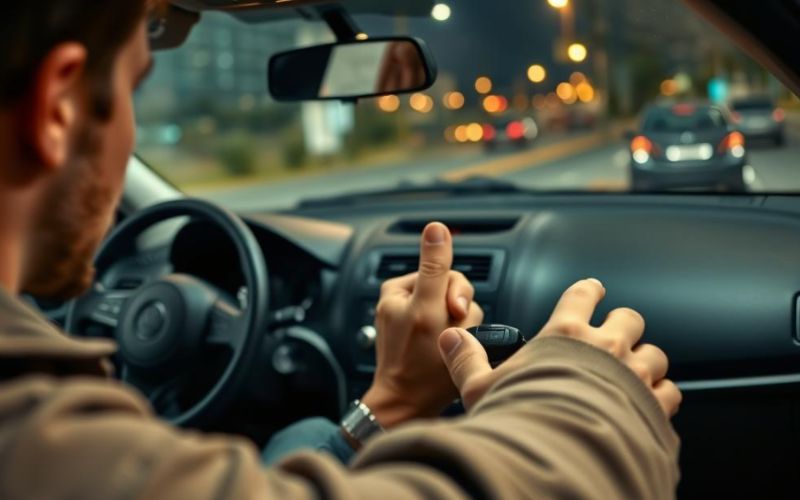Ever found yourself ready to go, but your car won’t start? It’s really frustrating. It messes up your day and can be a big problem.
Many drivers face this issue. Knowing why and how to fix it can save you time and stress. It helps you get back on the road fast.
Topic Summary
- Common Scenarios When Facing Starting Problems
- Why Won’t My Car Start? Identifying The Root Causes
- DIY Diagnosis: Determining What’s Wrong
- Proven Solutions to Get Back on the Road
- Conclusion: Preventing Future Starting Problems
- FAQs on Why Won’t My Car Start and How to Fix It?
- Why Won’t My Car Start, but The Lights and Radio Work?
- What Are The Common Reasons Why a Car Won’t Turn Over?
- How Do I Troubleshoot a Car That Won’t Start?
- Can Weather Conditions Affect My Car’s Ability to Start?
- What Are Some Signs That My Car’s Battery is Failing?
- How Can I Diagnose Fuel System Problems That Prevent My Car From Starting?
- What Tools Do I Need to Diagnose a Car Starting issue?
- Can a Faulty Alternator Prevent My Car From Starting?
- How Do I Fix a Car That Cranks But Won’t Start?
Key Takeaways
- Common causes of car starting problems
- Basic troubleshooting steps
- When to seek professional help
- Preventive measures to avoid future issues
- Tips for maintaining your vehicle’s health
Common Scenarios When Facing Starting Problems
Having a car that won’t start can be really confusing. It often happens when you least expect it. Knowing why it happens can help you find a solution.
The Morning Surprise: Car Worked Yesterday But Not Today
Waking up to find your car won’t start is very frustrating. It’s even more so if it worked fine the day before. This could be due to a dead battery, a bad alternator, or starter motor problems.
As a mechanic says, “A car that won’t start is like a puzzle; you need to find the missing piece.” Check the battery terminals for corrosion and make sure the battery is charged.
Weather-Related Starting Failures
Weather can really affect your car’s starting. Extreme temperatures can harm the battery and engine. Cold weather makes oil thicker, making it harder to start. Hot weather can dry out the battery.
An expert says, “Weather-related starting issues are common, but they can often be mitigated with proper vehicle maintenance.”
Gradual Decline: Warning Signs You Missed
Sometimes, a car won’t start because it’s slowly getting worse. Ignoring signs like dim headlights or slow engine crank can lead to this. Regular checks can catch these problems early.
It’s important to pay attention and fix issues quickly. This way, you won’t get stuck without a car.
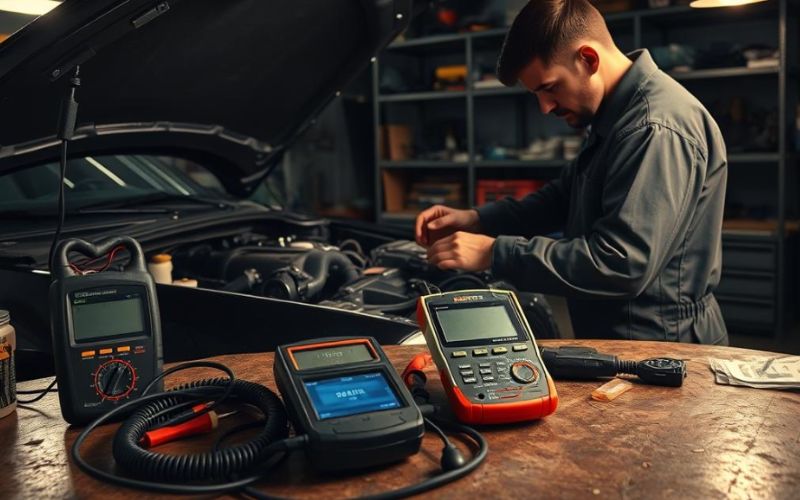
Understanding these common problems can help you fix them. Whether it’s a simple fix or a bigger issue, knowing the cause can save you time and stress.
Why Won’t My Car Start? Identifying The Root Causes
A car that won’t start is really frustrating. But knowing why it won’t start can help fix it. It’s important to find the main problem to solve it right.
Battery Issues: The Starting Problem
Battery problems are the top reason for a car not starting. Over time, batteries can’t hold a charge well. If your car is old or hasn’t moved in a while, the battery might be the problem.
Case Study: How Age Affects Battery Performance
A car battery usually lasts three to five years. Its performance drops as it gets older. A battery near the end of its life might not start the engine, even in cold weather.
Signs of Battery Failure vs Alternator Problems
It’s key to tell apart battery failure from alternator problems. A bad battery can’t hold a charge. But an alternator issue means it’s not getting recharged. Signs like dim headlights or hard engine starts can point to these issues.
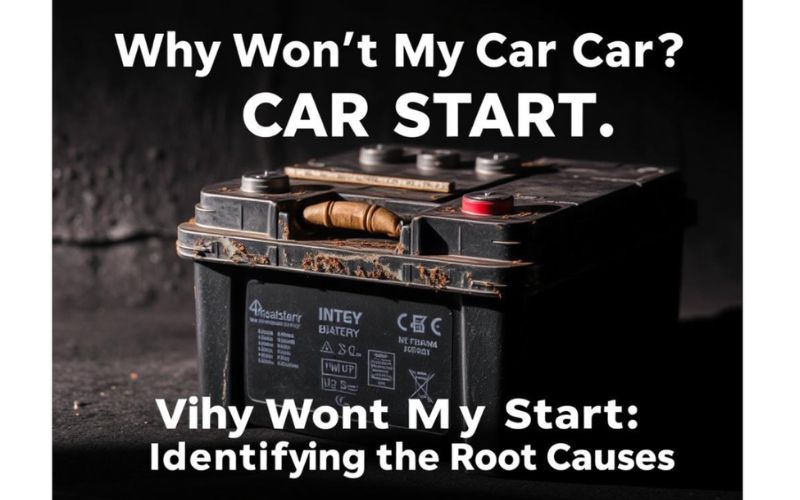
Starter Motor Failures
The starter motor is vital for starting your car. If it fails, you might hear a click but the engine won’t start. Worn-out or electrical problems with the starter motor can cause this.
Fuel System Problems
Problems in the fuel system can also stop your car from starting. This might be due to a bad fuel pump, clogged filter, or faulty injectors. Without enough fuel, even with a good battery and starter, your car won’t start.
Ignition System Malfunctions
The ignition system creates the spark to start the engine. Issues with the coil, spark plugs, or module can prevent starting. Worn spark plugs or a faulty ignition coil can stop your car from starting.
DIY Diagnosis: Determining What’s Wrong
Fixing a car that won’t start starts with understanding symptoms. Basic diagnostic techniques can save time and money.
The Sound Test: What Your Car Is Telling You
When you turn the key, your car makes a sound. This sound can tell you what’s wrong.
Clicking Sounds: What They Mean
A clicking sound means a problem with the starter or battery. A slow click might be a dead battery. A fast click could mean a bad starter motor.
Cranking Without Starting: Fuel vs Ignition Issues
If your car cranks but doesn’t start, it might be fuel or ignition. Check the fuel level and spark plugs to find out.
Visual Inspection Techniques
Looking at your car can tell you a lot. Check for wear, corrosion, or damage on parts like battery terminals and ignition switch.
Simple Tools Every Driver Should Have For Diagnosis
Right tools make a big difference. You’ll need a multimeter, spark tester, and basic tools for checking and cleaning parts.
| Tool | Use |
| Multimeter | Checking electrical circuits and battery voltage |
| Spark Tester | Diagnosing ignition system issues |
| Basic Hand Tools | Inspecting and cleaning components, checking for wear or damage |
“The art of diagnosis is not just about fixing what’s broken, but understanding why it’s broken in the first place.”
John Smith, Master Mechanic
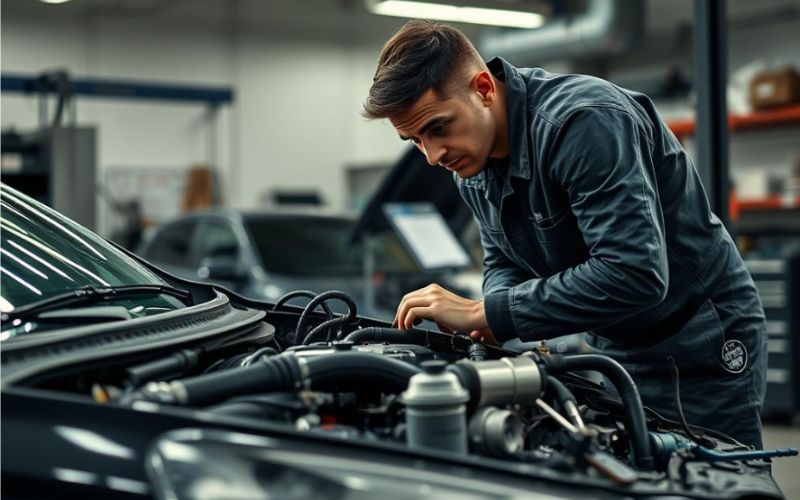
By using these DIY methods, you can often find and fix your car’s starting problem.
Proven Solutions to Get Back on the Road
Let’s find ways to get your car running again. We’ll look at fixes for dead batteries, corroded connections, and fuel issues.
Jump-Starting Techniques That Work Every Time
Jump-starting is easy for a dead battery. You’ll need jumper cables and another car with a battery. Connect the red cable to the dead battery’s positive terminal, then to the good battery’s.
Next, connect the black cable to the good battery’s negative terminal, and then to the dead battery’s car. Start the working car’s engine for a few minutes.
Try to start the dead battery’s car. If it doesn’t start right away, let the working car’s engine run more. Then try starting the dead battery’s car again.
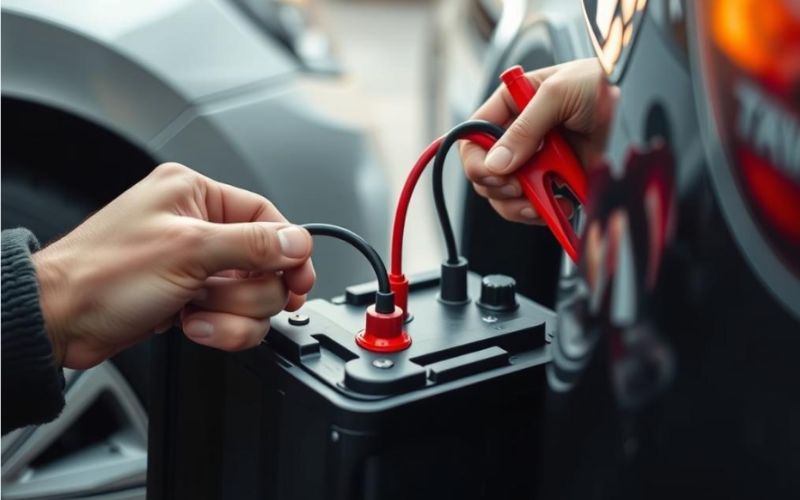
Quick Fixes For Corroded Battery Connections
Corrosion on battery terminals can stop your car from starting. Disconnect the battery cables, starting with the negative (black) one. Clean the terminals with baking soda and water, and use a wire brush to remove corrosion.
After cleaning, reconnect the cables in the reverse order (positive first, then negative). Make sure the connections are tight to avoid future problems.
Addressing Fuel Delivery Problems
If your car won’t start because it’s not getting fuel, check the fuel gauge. If the gauge is working but the car won’t start, you might have a clogged fuel filter or a faulty fuel pump.
Replacing a clogged fuel filter is easy to do at home. But, a faulty fuel pump might need a professional.
Case Study: When a Tow Was Avoided With Simple Fixes
A driver was stuck with a car that wouldn’t start because of a corroded battery connection. Cleaning the terminals and jump-starting the car fixed the problem without needing a tow.
| Issue | Solution | DIY or Professional |
| Dead Battery | Jump-starting | DIY |
| Corroded Battery Connections | Cleaning terminals | DIY |
| Fuel Delivery Problems | Check fuel filter, fuel pump | Both DIY and Professional |
Conclusion: Preventing Future Starting Problems
Now you know why your car might not start and how to fix it. It’s important to take steps to avoid future problems. Regular car maintenance is key to not getting stuck with a car that won’t start.
Keep your battery terminals clean and check your battery’s age. Make sure your fuel system works right. These steps can help a lot in avoiding car starting issues.
Think about making a routine to check your car. Look at your starter motor, ignition system, and fuel delivery. Being proactive can help you deal with car problems better.
Knowing why your car won’t start and how to fix it can save you a lot. Follow the tips in this article and stay proactive with car care. This will help you solve car starting problems and avoid them in the future.
FAQs on Why Won’t My Car Start and How to Fix It?
Why Won’t My Car Start, but The Lights and Radio Work?
If your car’s lights and radio work but the engine won’t start, it’s likely a starter motor or ignition switch problem. Check these parts for any issues.
What Are The Common Reasons Why a Car Won’t Turn Over?
A car not turning over might have a dead battery, a faulty starter motor, or bad connections. Check the battery and connections first.
How Do I Troubleshoot a Car That Won’t Start?
Start by checking the battery, starter motor, and ignition switch. Also, listen for unusual noises when you turn the key.
Can Weather Conditions Affect My Car’s Ability to Start?
Yes, extreme weather can impact your car’s start. Cold weather slows down the battery, while hot weather causes fluid loss.
What Are Some Signs That My Car’s Battery is Failing?
A failing battery shows as slow engine cranking, dim headlights, and hard starts. Test your battery if you see these signs.
How Can I Diagnose Fuel System Problems That Prevent My Car From Starting?
Check the fuel level and filter condition. Also, listen for the fuel pump’s noise when turning the key. A bad fuel pump or clogged filter can stop your car from starting.
What Tools Do I Need to Diagnose a Car Starting issue?
You’ll need a multimeter for battery checks, jumper cables, and a basic toolkit for inspections.
Can a Faulty Alternator Prevent My Car From Starting?
Yes, a bad alternator can prevent starting by not charging the battery. A dead battery leads to starting problems.
How Do I Fix a Car That Cranks But Won’t Start?
Cranking but not starting might be due to fuel or ignition issues. Check spark plugs, fuel filter, and pump. A mechanic might be needed for a detailed check.

